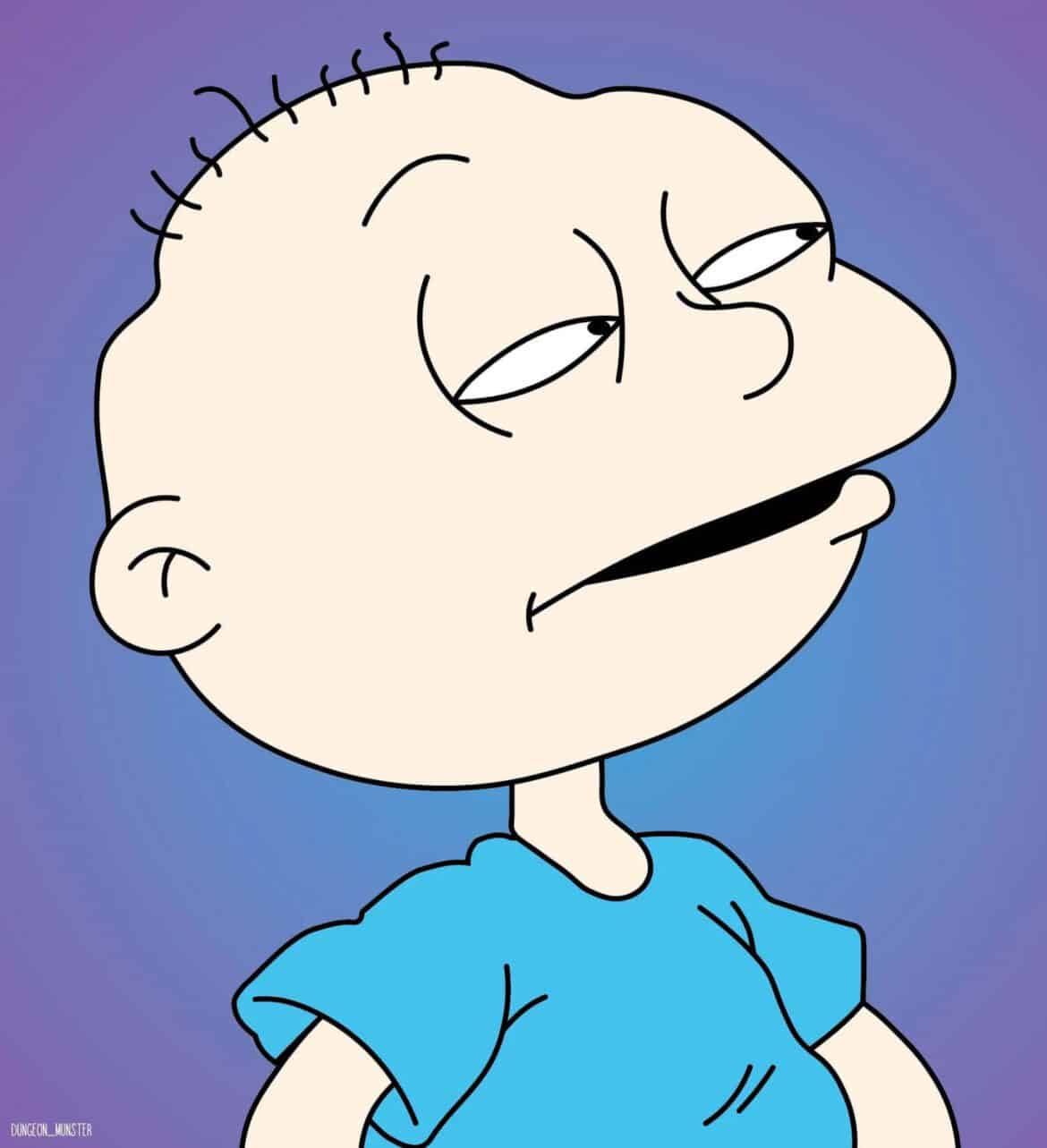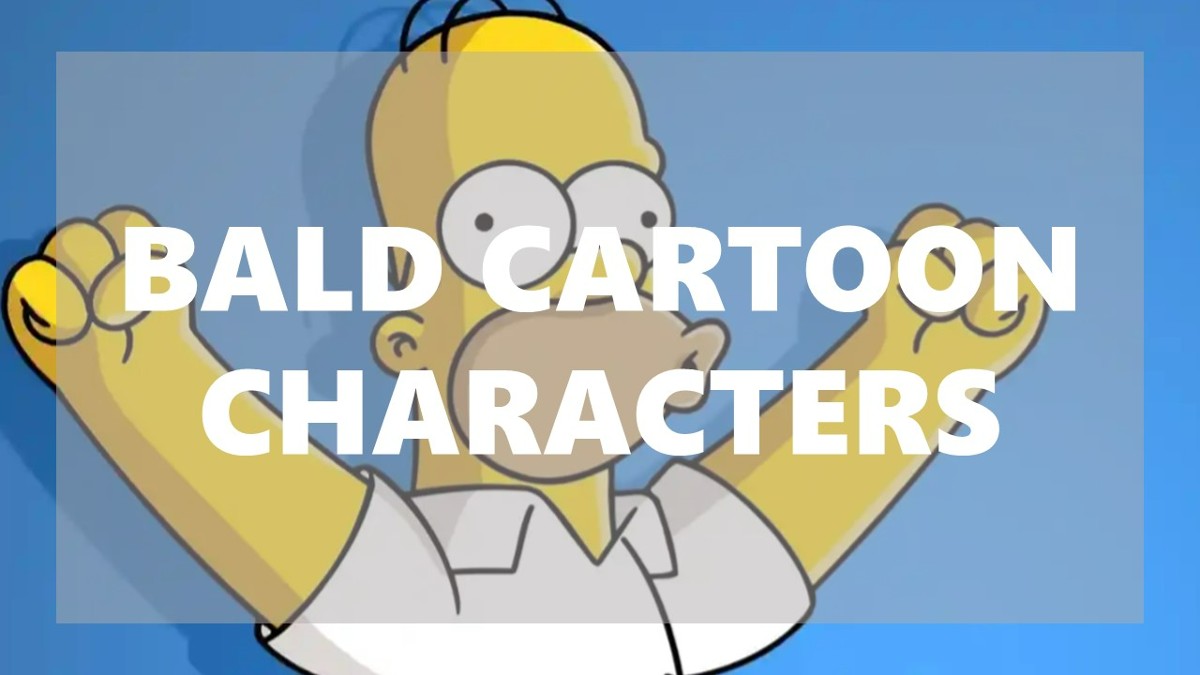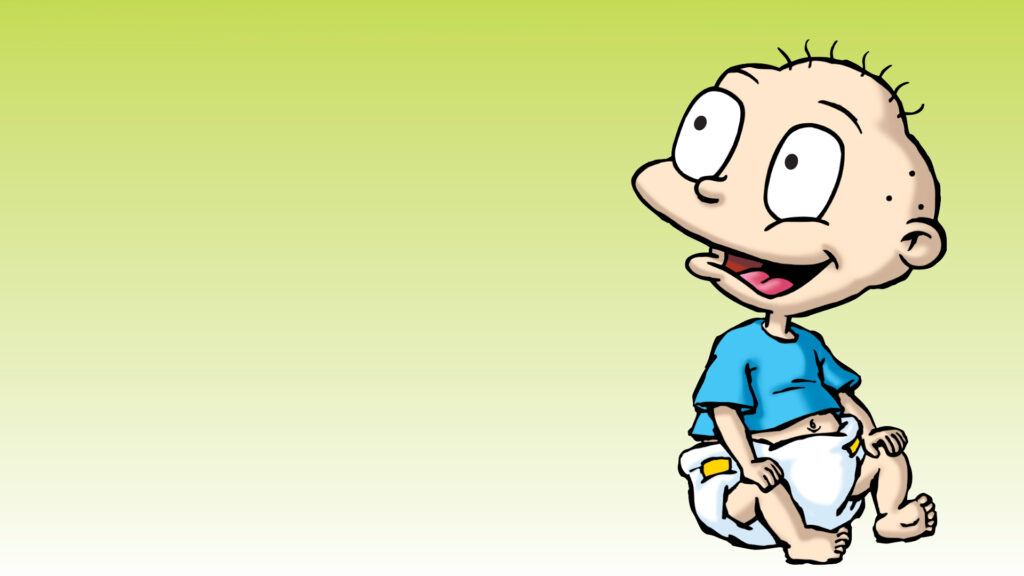Have you ever wondered why so many cartoon characters are bald? It's not just a random choice—it's a design decision rooted in storytelling, animation efficiency, and cultural symbolism. Bald cartoon characters have become an iconic part of animated history, and today we're diving deep into their world. Get ready to uncover the secrets behind these hairless heroes and villains!
If you're here, chances are you're curious about the phenomenon of cartoon characters being bald. Whether it's Mr. Burns from The Simpsons or Patrick Star from SpongeBob SquarePants, baldness in cartoons has a purpose. It's more than just a visual quirk—it's a storytelling tool that animators use to convey personality, humor, and even deeper meanings.
This article will take you on a journey through the world of bald cartoon characters, exploring their origins, significance, and the reasons behind their design. By the end, you'll have a fresh perspective on why baldness works so well in animation and how it enhances the storytelling experience.
Read also:Wndr Museum San Diego Photos A Captivating Journey Through Art And Wonder
Table of Contents
- Introduction: The Bald Revolution in Animation
- A Brief History of Bald Cartoon Characters
- Why Animators Love Bald Characters
- Baldness as a Symbol in Animation
- Famous Bald Cartoon Characters You Love (or Hate)
- The Psychology Behind Bald Cartoon Characters
- Cultural Impact of Bald Cartoon Characters
- How Animation Techniques Influence Design
- Why Audiences Connect with Bald Characters
- The Future of Bald Cartoon Characters
- Conclusion: Celebrating Hairless Heroes
Introduction: The Bald Revolution in Animation
Let's face it—bald cartoon characters are everywhere. From the lovable Patrick Star to the menacing Mr. Burns, these characters have left an indelible mark on pop culture. But why do animators choose baldness as a defining trait for so many characters? The answer lies in a combination of practicality, symbolism, and storytelling.
Animation is all about simplifying complex ideas into digestible visuals. Bald characters are easier to animate because there's no need to worry about hairstyles, hair movement, or complex textures. Plus, baldness often comes with a built-in personality trait—whether it's humor, villainy, or intelligence. It's a win-win for animators and audiences alike.
So, what makes bald cartoon characters so special? Let's explore their history, significance, and cultural impact in the sections below. Buckle up—it's going to be a wild ride!
A Brief History of Bald Cartoon Characters
The history of bald cartoon characters dates back to the early days of animation. Think about Popeye the Sailor Man's nemesis, Bluto—or even earlier, Felix the Cat's bald creator, Otto Messmer. These characters were designed with simplicity in mind, and baldness was a natural choice for animators who wanted to focus on movement and expression rather than intricate details.
As animation evolved, bald characters became more than just a design choice—they became symbols. In the 1960s and 1970s, bald characters like Mr. Spock from Star Trek (yes, he was bald before he got his iconic hair) and The Joker from Batman became cultural icons. These characters used baldness to convey intelligence, villainy, or otherworldliness.
Today, bald cartoon characters are more diverse than ever. They represent a wide range of personalities, from the lovable to the menacing, and their baldness is often a key part of their identity. Let's break it down further in the next section.
Read also:Kp Rutland A Comprehensive Guide To The Rising Star
Why Animators Love Bald Characters
Animators love bald characters for a simple reason—they're easier to animate. Hair is one of the most complex elements in animation, requiring careful attention to detail to make it look realistic. By removing hair from the equation, animators can focus on other aspects of character design, such as facial expressions, body language, and movement.
But it's not just about convenience. Baldness can also enhance storytelling. For example, a bald character might be portrayed as intelligent, authoritative, or even sinister. Think about characters like Brain from Pinky and the Brain or Professor Farnsworth from Futurama. Their baldness is a visual cue that tells us something about their personality before they even speak.
Plus, bald characters are often more versatile in terms of design. Without hair to distract from their features, animators can experiment with unique shapes, colors, and textures to make their characters stand out. It's a creative freedom that many animators embrace wholeheartedly.
Animation Efficiency: Why Less is More
Efficiency is key in animation, especially when you're working with tight deadlines and budgets. By designing bald characters, animators can save time and resources while still creating visually appealing designs. This is particularly important in fast-paced shows like SpongeBob SquarePants or South Park, where every second counts.
But it's not just about saving time—it's also about maintaining consistency. Hair can be unpredictable, especially in animated form. A character's hair might look different from one scene to the next, which can disrupt the viewer's experience. Bald characters, on the other hand, remain consistent throughout the show, giving audiences a sense of familiarity and stability.
Baldness as a Symbol in Animation
Baldness in animation is more than just a design choice—it's a powerful symbol. Depending on the context, baldness can represent intelligence, power, vulnerability, or even humor. Animators use these symbolic meanings to add depth to their characters and enhance the storytelling experience.
For example, bald characters are often portrayed as intelligent or authoritative figures. Think about characters like Professor Frink from The Simpsons or Dr. Doofenshmirtz from Phineas and Ferb. Their baldness is a visual cue that tells us they're smart, eccentric, or even a little bit crazy.
On the other hand, baldness can also represent vulnerability or humor. Characters like Patrick Star from SpongeBob SquarePants or Homer Simpson's baldness are played for laughs, often highlighting their quirky personalities. It's a clever way to add humor to a scene without relying on dialogue.
The Dark Side of Baldness
Not all bald cartoon characters are lovable or quirky. Some use baldness as a symbol of villainy or menace. Characters like The Joker from Batman or Megamind from the movie Megamind use their baldness to convey a sense of danger or unpredictability. It's a subtle but effective way to create tension and suspense in a story.
But why does baldness work so well for villains? It's all about breaking expectations. In real life, baldness is often associated with aging or illness, but in animation, it can represent something much darker. By giving a villain a bald head, animators create a visual disconnect that makes them stand out from the crowd.
Famous Bald Cartoon Characters You Love (or Hate)
Let's take a moment to appreciate some of the most iconic bald cartoon characters in history. These characters have become cultural icons, and their baldness is an integral part of their identity. Here's a list of some of the most famous bald cartoon characters:
- Mr. Burns from The Simpsons
- Patrick Star from SpongeBob SquarePants
- Brain from Pinky and the Brain
- Professor Farnsworth from Futurama
- The Joker from Batman
- Megamind from Megamind
- Dr. Doofenshmirtz from Phineas and Ferb
- Professor Frink from The Simpsons
Each of these characters uses baldness in a unique way to enhance their personality and storytelling. Whether they're lovable, quirky, or downright evil, their baldness is a defining trait that makes them unforgettable.
The Cultural Impact of Famous Bald Characters
Iconic bald cartoon characters have had a lasting impact on popular culture. They've influenced everything from fashion to comedy, and their baldness has become a symbol of their legacy. For example, Mr. Burns' signature bald head and evil laugh have become synonymous with corporate greed, while Patrick Star's baldness has become a symbol of lovable incompetence.
But it's not just about entertainment—these characters have also sparked conversations about baldness in real life. By portraying baldness in a positive light, animators have helped to normalize it and reduce stigma. It's a small but significant step toward greater acceptance and understanding.
The Psychology Behind Bald Cartoon Characters
Why do we connect with bald cartoon characters? It's all about psychology. Humans are wired to recognize patterns, and baldness is a visual cue that helps us quickly understand a character's personality. Whether it's intelligence, humor, or villainy, baldness provides a shortcut to understanding a character's role in a story.
But it's not just about recognition—it's also about empathy. Bald characters often have exaggerated features or quirky personalities that make them relatable and endearing. We see ourselves in them, even if we don't share their baldness. It's a powerful connection that transcends physical appearance.
Plus, baldness can be a source of humor. Characters like Patrick Star and Homer Simpson use their baldness to make us laugh, often highlighting their quirks and flaws in a way that feels authentic and relatable. It's a reminder that imperfections are what make us human—and what make cartoon characters so lovable.
The Science of Visual Cues
Visual cues like baldness are processed by our brains in milliseconds, allowing us to quickly understand a character's personality and role in a story. This is especially important in animation, where time is limited and every second counts. By using baldness as a visual cue, animators can convey complex ideas in a matter of seconds, making their stories more engaging and memorable.
But it's not just about speed—it's also about depth. Baldness can add layers of meaning to a character's personality, enhancing the storytelling experience. Whether it's intelligence, humor, or villainy, baldness provides a rich canvas for animators to explore.
Cultural Impact of Bald Cartoon Characters
Bald cartoon characters have had a profound impact on popular culture. They've influenced everything from fashion to comedy, and their baldness has become a symbol of their legacy. But their influence extends beyond entertainment—it's also about representation and acceptance.
By portraying baldness in a positive light, animators have helped to normalize it and reduce stigma. Characters like Patrick Star and Mr. Burns have shown us that baldness is nothing to be ashamed of—it's just another part of who we are. This message of acceptance has resonated with audiences around the world, sparking conversations about self-esteem and body positivity.
But it's not just about baldness—it's about representation as a whole. Cartoon characters, whether bald or not, have the power to shape our perceptions of the world. By creating diverse and inclusive characters, animators can help to create a more accepting and understanding society.
Breaking Stereotypes
Bald cartoon characters have also played a role in breaking stereotypes about baldness. In the past, baldness was often associated with aging or illness, but today's cartoon characters show us that baldness can be cool, funny, and even heroic. By challenging these stereotypes, animators are helping to create a more inclusive and diverse world—one character at a time.
How Animation Techniques Influence Design
Animation techniques play a crucial role in character design, and baldness is no exception. By removing hair from the equation, animators can focus on other aspects of design, such as facial expressions, body language, and movement. This allows them to create more dynamic and engaging characters that resonate with audiences.
But it's not just about design—it's also about storytelling. Animation techniques like exaggeration and caricature are used to enhance a character's personality and make them more memorable. Bald characters often benefit from these techniques, as their lack of hair allows animators to focus on other aspects of their design.
Plus, animation technology has come a long way in recent years, allowing animators to create more detailed and realistic designs. While bald characters may not have hair, they can still have intricate textures and patterns that add depth to their appearance. It's a testament to the creativity and skill of animators everywhere.
Technology and Character Design
Advances in animation technology have opened up new possibilities for character design, including bald characters. With tools like 3D modeling and motion capture, animators can create more realistic and dynamic designs that bring characters to life in ways that were once impossible. This has allowed bald characters to evolve beyond simple designs and become complex, multi-dimensional figures


